
Calibration is a crucial step in DEM to ensure that the virtual materials accurately represent real particles. Further, every bulk material is unique and unlike CFD or FEA simulations, standard values for materials will not always provide an accurate representation of the real particles. The Rocky Calibration suite provides engineers with 8 Rocky calibration projects to help automate the often lengthy calibration process by replicating standard material calibration tests.
In the latest Rocky 2022 R1 release, a new application in the form of a Pre-Post Script further streamlines the calibration process by automatically adjusting the initial parameters needed to calibrate the materials efficiently. Rocky’s new Material Wizard is a quick and straightforward tool that can jumpstart calibration work given experimentally measurable qualities like bulk density, angle of repose, and cohesion type. The engineer can input experimentally obtained values or choose from a broader range.
Capturing the complex behavior of this “sticky” material in a simulation environment is a challenge. To understand and predict the flow of iron-ore fines, Onyx Projects in collaboration with ESSS & LEAP developed simulated shear cell experiments to calibrate the flowability of different Iron-ore fines materials at different moisture levels to capture the full range of real flow behavior and replicate the real flow problems. It is a fantastic development that these calibration tools and methods are now more widely available in Rocky DEM’s calibration suite.
Richard Elliott, Principal, Onyx Projects
Material Wizard calculations are powered by Ansys Optislang without specifically requiring an Optislang licence to use. Within seconds, the Material Wizard will provide a list of starting parameters that can be sorted by friction factor, rolling resistance, particle density or stiffness fraction. The user can then choose upto 3 material parameters and automatically create 3 new materials and particles that can then be fine-tuned using the calibration suite and efficiently calibrate the required materials. Watch the video below to learn more.
The Rocky team is hard at work building the end-to-end tools and features to help you set up, simulate, and analyze more types of particles dynamics easier and using fewer computational resources than ever before.
Below is a preview of some key new and improved features of this upcoming version. Further details about these and more new features will be published on the Customer Portal after Rocky 22R1 is released.
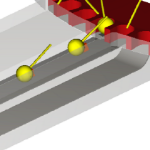
“Particle Assembly” Shape Type
PERFORMANCE IMPROVEMENT
Explore possibilities for even truer-to-life particle shapes by assembling different particles into brand new forms. Also, achieve performance gains by combining simpler particles’ shapes to replace more computationally expensive ones.
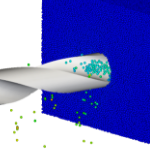
“Particle Bond Model” Module
FEATURE
Better simulate the behavior of agglomerate materials by using this model, which bonds particles together using cylindrical, massless, spring-dashpot connections. These bonds can be broken at any time if the tensile or shear stresses exceed certain prescribed values.
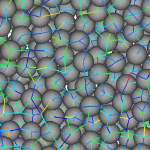
Contact Network Visualisation
POST-PROCESSING
Analyse the force-chain organisation of your material system by viewing the contact network of your particles.
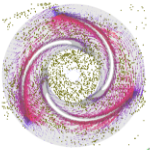
1-Way Transient Coupling with Fluent
FEATURE
Extends existing 1-Way Fluent coupling abilities to include either steady-state or transient CFD results.

Multi-Species Support for Mass Transfer in 2-Way Fluent Coupling
FEATURE
Enable mass transfer for multiple species for two-way Rocky-Fluent coupled cases.
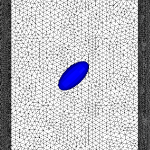
2-Way Fluent Semi-Resolved Coupling Improvements
FEATURE
Make better use of the semi-resolved method with CFD distributed parallelisation and new mesh cell types.
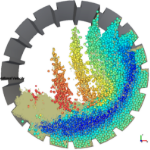
DEM-SPH Coupling for High Solid Content Slurry Simulations
FEATURE
The Smoothed Particle Hydrodynamics (SPH) method is optimized to simulate complex fluid-particle problems with free surfaces and large deformations, such as slurries and liquid sloshing scenarios.
This is the first release of the SPH kernel. It was conceived for a specific range of applications (fluid-particle interaction with high solid content) and has limited support regarding the whole matrix of Rocky capabilities.
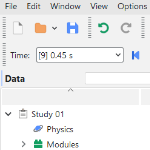
New Look and Feel
USER INTERFACE
Sleeker, more modern layouts and cleaner, more intuitive icons combine to improve your experience of the Rocky user interface.


